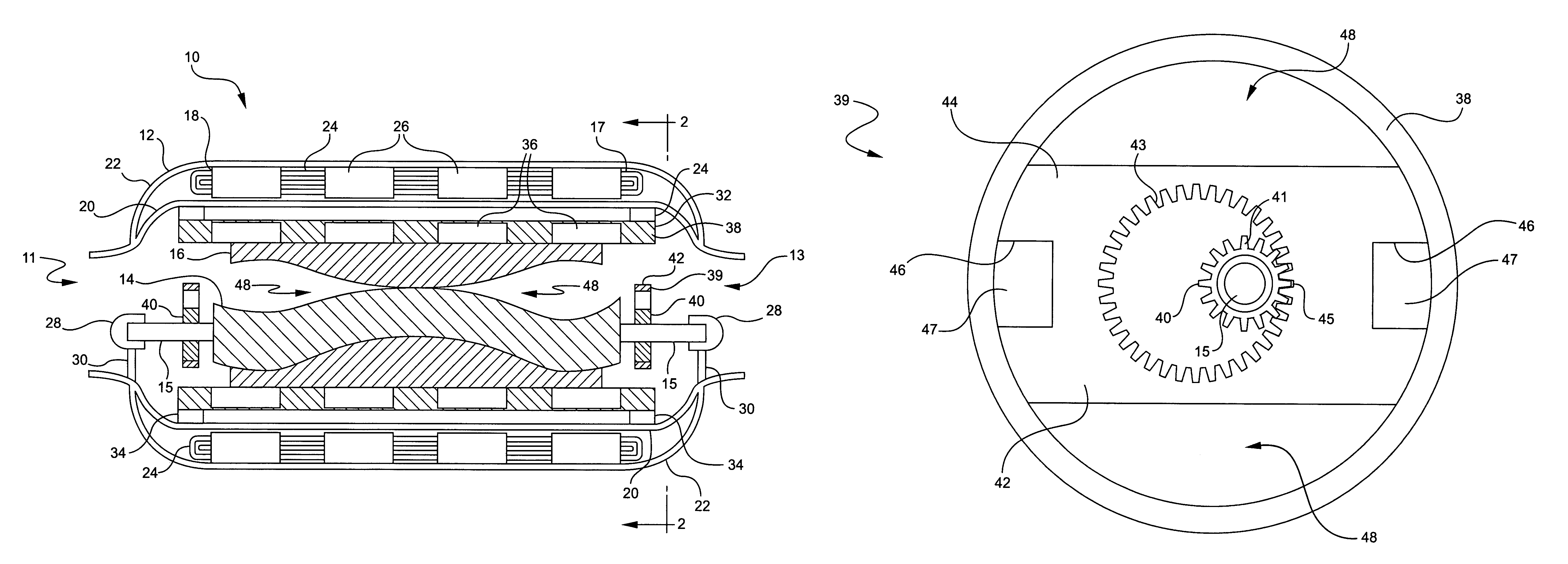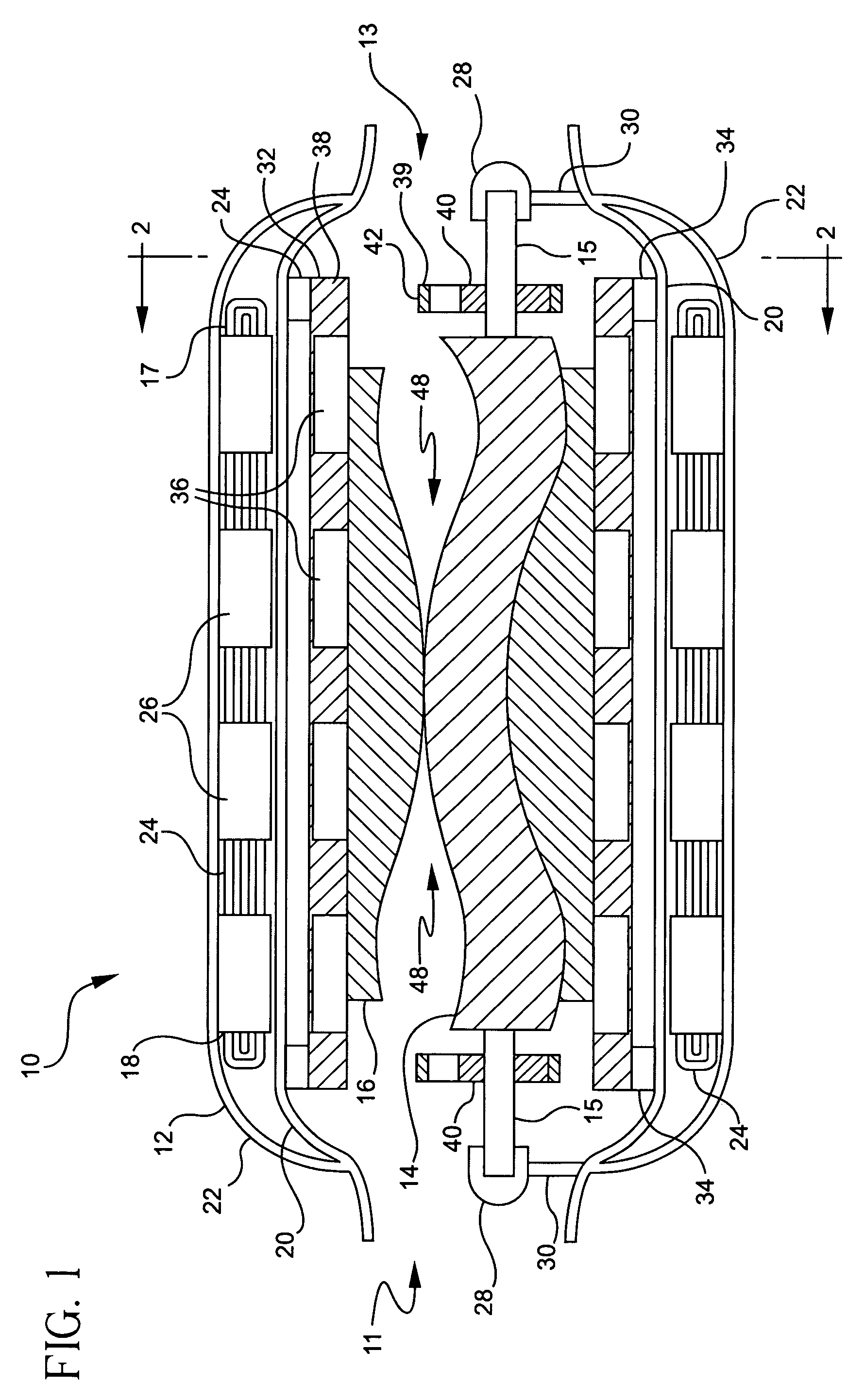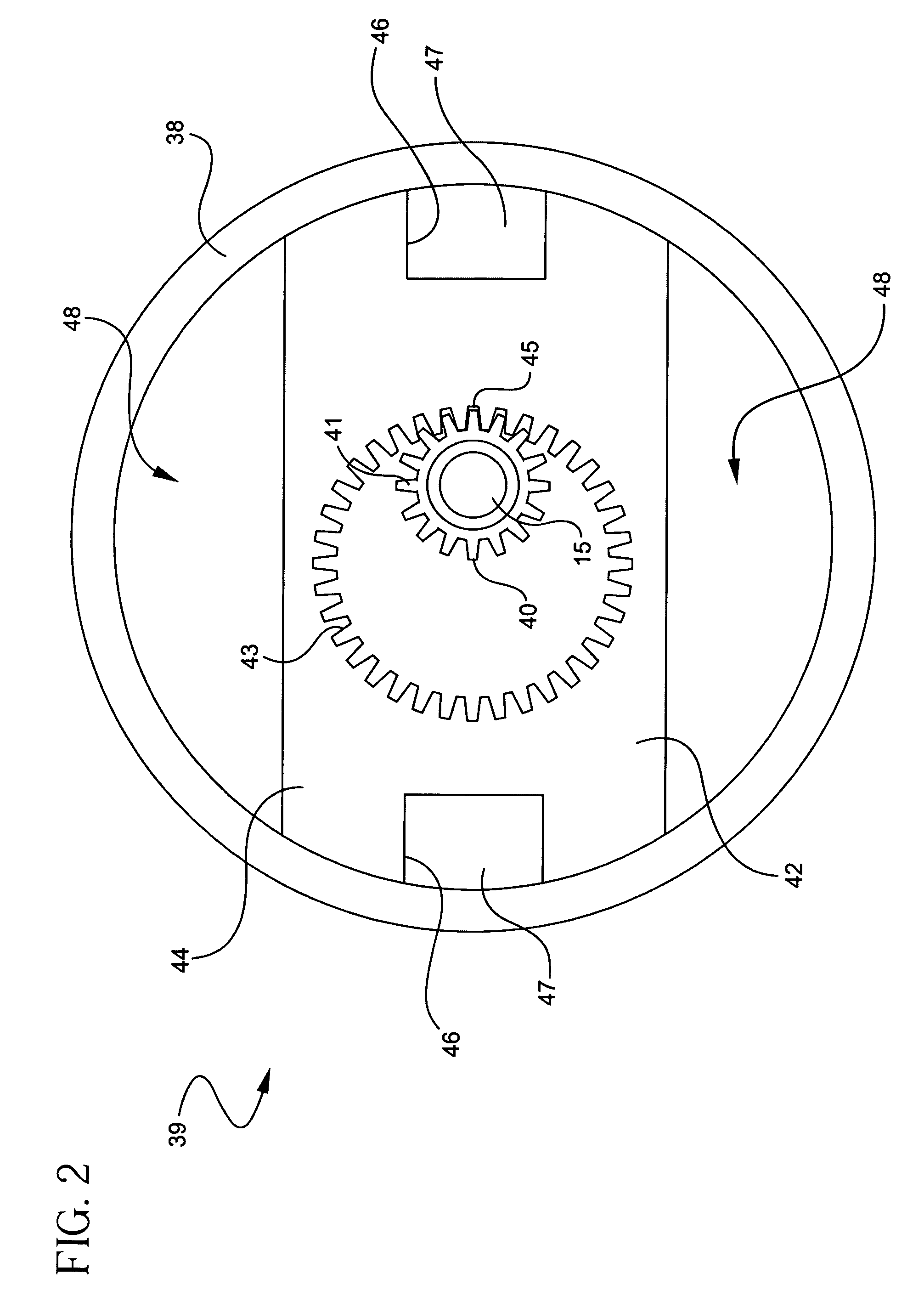Direct drive linear flow blood pump
a direct drive, linear technology, applied in the direction of pump, positive displacement liquid engine, liquid fuel engine, etc., can solve the problems of inefficiency of the device, inability to tailor the device to the needs of particular patients or particular circumstances, and blood has substantial viscosity, so as to reduce the unbalanced magnetic force
- Summary
- Abstract
- Description
- Claims
- Application Information
AI Technical Summary
Benefits of technology
Problems solved by technology
Method used
Image
Examples
Embodiment Construction
[0017]The invention herein is a ventricular assistive device based on a progressive cavity pump. A progressive cavity pump does not use blades or fins to propel the blood. Instead, the pump stator and rotor are designed so that, when combined, there is a progressive series of cavities formed between the pump rotor and the pump stator. Blood is carried through the pump chamber in these cavities when both the rotor and the stator rotate.
[0018]Referring to FIG. 1, the pump 10 of the present invention generally includes a pump housing 12 defining an inlet 11 and an outlet 13 and having contained therein a pump rotor 14 and a pump stator 16. The pump rotor 14 is helical in shape, somewhat like a single-threaded screw, and preferably has a circular cross-section. The pump stator 16 resembles a double-threaded screw, closely engaged with the pump rotor 14.
[0019]In a preferred embodiment, a gear arrangement 39 drives the pump rotor 14 to rotate with the pump stator 16 in the same direction....
PUM
 Login to View More
Login to View More Abstract
Description
Claims
Application Information
 Login to View More
Login to View More - R&D
- Intellectual Property
- Life Sciences
- Materials
- Tech Scout
- Unparalleled Data Quality
- Higher Quality Content
- 60% Fewer Hallucinations
Browse by: Latest US Patents, China's latest patents, Technical Efficacy Thesaurus, Application Domain, Technology Topic, Popular Technical Reports.
© 2025 PatSnap. All rights reserved.Legal|Privacy policy|Modern Slavery Act Transparency Statement|Sitemap|About US| Contact US: help@patsnap.com



